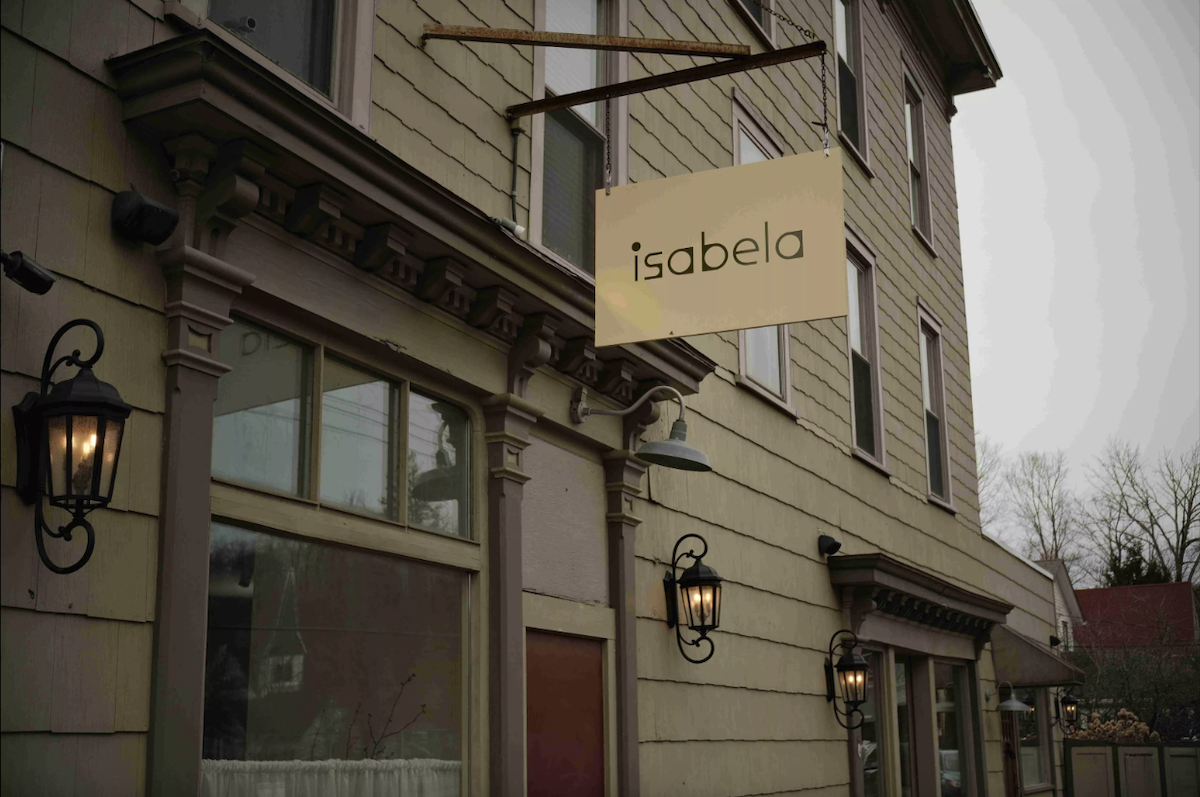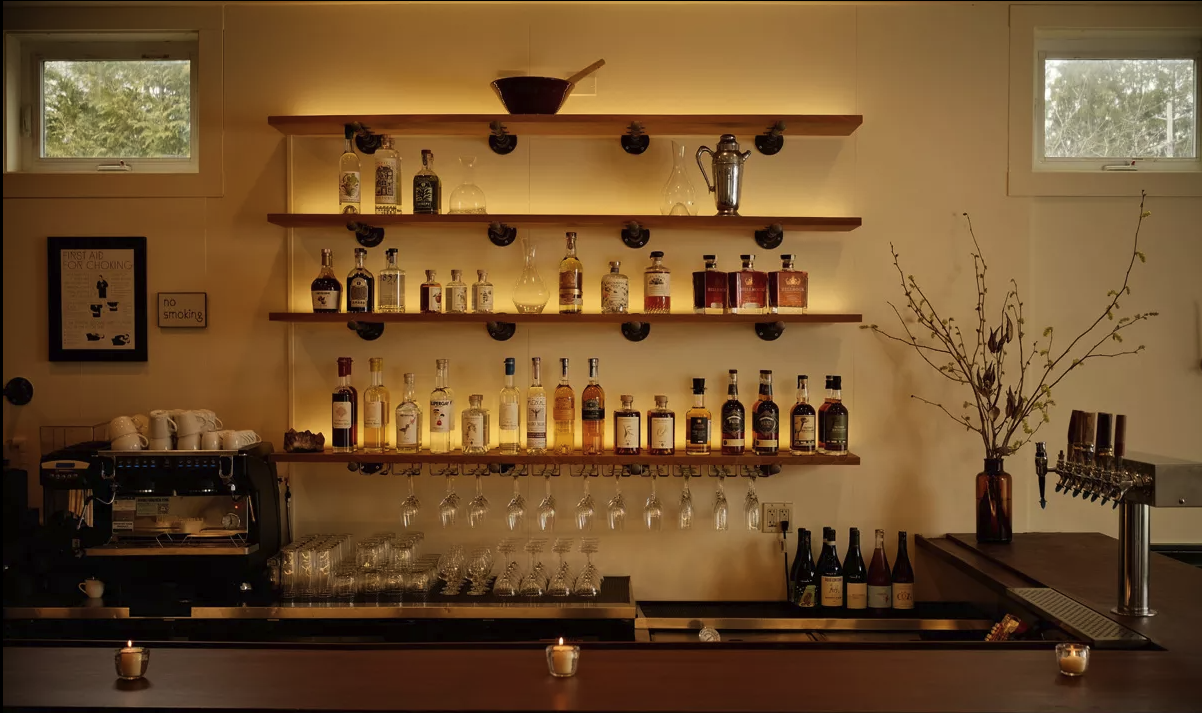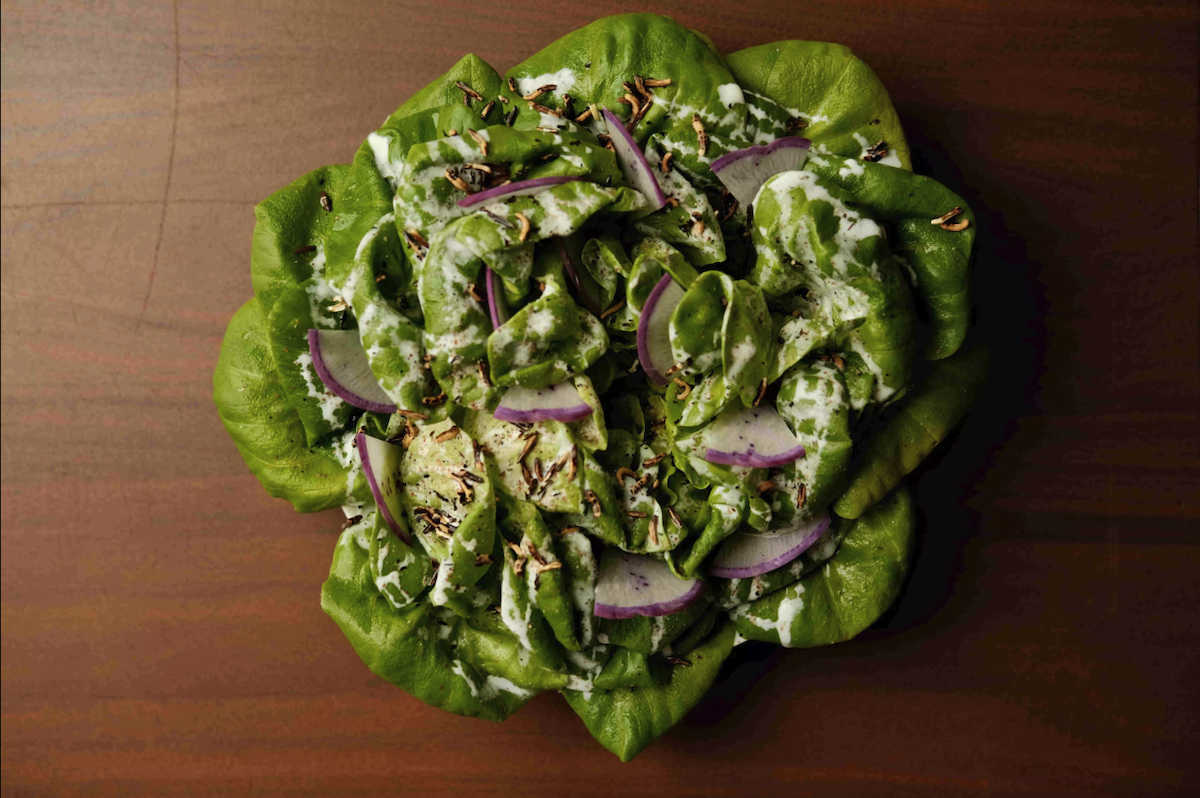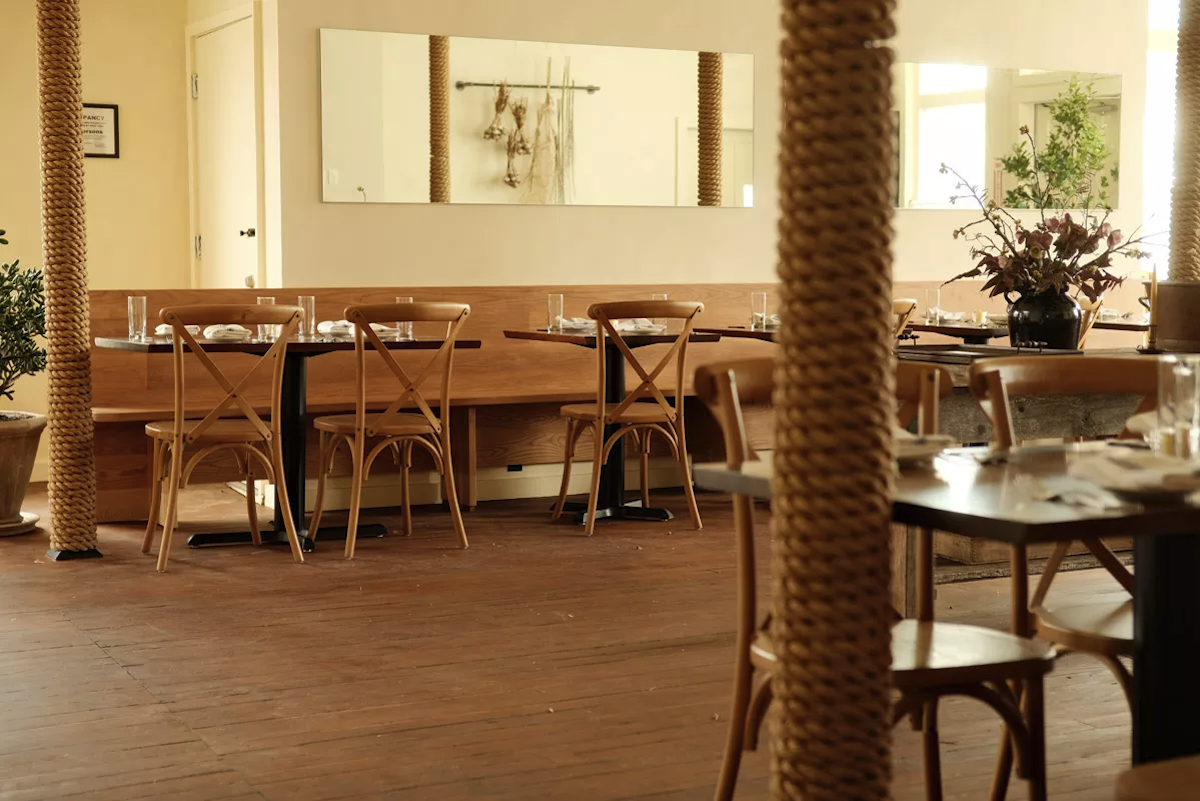Michelin-Starred Chef Crafts Vegetable-Driven Menu at Isabela in Amenia
Acclaimed, produce forward dishes in an inconspicuous and cozy spot.

Acclaimed, produce forward dishes in an inconspicuous and cozy spot.

Butterhead lettuce is dressed with spruce vinaigrette and served with radishes, shallots, and fresh cheese.
- IsabelaThe sourdough comes out first: four warm, golden Parker House-style rolls served with a round of Cowbella butter, topped with tangy buttermilk and a pinch of flaky salt. It’s a quiet, intentional beginning to a meal at Isabela, the new Amenia bistro from Jose Ramirez-Ruiz (in the former Monty’s space). Behind the food’s understated elegance is a deep devotion to craft, community, and—vegetables.
Isabela delights in subtle subversion. While classic cocktails are available, the bar leans hyperlocal: nearly all cider, beer, and spirits are sourced from New York State, with tequila and mezcal the only outliers. Liz, the house bartender, nudged me toward a cocktail on tap: a Tipperary, made with bourbon, sweet vermouth, and Genepy. It lands somewhere between a Manhattan and an herbal Alpine breeze. The nonalcoholic Quince Mezcalito, with quince shrub and orange blossom salt, hit zippy, sweet, and savory notes with style.

All photos provided by Isabela.
Ramirez-Ruiz calls his philosophy cocina de cercanias—cooking with everything around here. Though most ingredients are familiar, the menu is far from obvious. Its pleasures are revealed gradually: A phrase that invites curiosity (what’s a chaudfroid?), or a dish that delivers a stealthy hit of umami.
The menu is organized by size rather than course, inviting diners to compose a meal that suits their hunger and habits. After the sourdough, we started with a plate of olives and a side of fresh greens—overwintered baby kale and spinach dressed in a smoky vinaigrette made from foraged spruce boughs. As the season shifts, pea shoots and other spring greens will rotate in.
Ramirez-Ruiz describes Isabela as “a bistro of sorts”—welcoming, beautiful yet casual, and true to its Hudson Valley setting. “I had to build a place that at least attracts people like myself—blue collar people,” he says. To that end, the bar is reserved for walk-ins.
Dishes range from $8 to $36 and span snacks, small plates, mains, and sides. The vegetable-forward appetizers best showcase Ramirez-Ruiz’s culinary ethos. Marinated turnips with spinach, puffed rice, and peanuts recall the gentle savoriness of miso in both flavor and texture.
A starter of kale gnudi—pillowy dumplings filled with a sharp ricotta-Parmesan blend—floated in a delicate white bean and Parmesan broth. Though the dish typically includes guanciale, our server offered it without, insisting it’s better that way. She was right.
The trout—blushing coral and perfectly cooked—is paired with salsa seca, a crunchy seed-laced condiment that adds texture and depth. A puree of celeriac, smooth and earthy, forms the base, while paper-thin slices of raw celeriac on top add a sweet, vegetal crunch. It’s an elegant study in hot and cold, cooked and raw.
Other mains include fluke, a vegetarian pot-au-feu, a butcher’s cut (traditionally hanger steak—so prized the butcher kept it for himself), and roast chicken with cabbage, apple, potato, and golden raisins—a dish with the comforting heft of winter.

Service is gracious, confident, and refreshingly abundant. Staff wear simple, undyed linen aprons over black and white—uniform, but not stiff. When we lingered over the last of our bread, our server didn’t clear the plate—she brought more butter.
With just 44 seats, the dining room offers space to breathe. Blonde wood tables and syrup-colored floors keep things warm within the minimalist, farmhouse-chic setting. When we dined on its ninth night of service in early April, Isabela felt seasoned already: Full, buzzing with conversation, and relaxed in a way that suggests people will come back.
The wine list is anchored in low-intervention, mostly European bottles, with a few selections from California and New York. All Champagnes are grower-producers. Ramirez-Ruiz picks wines that don’t overwhelm the food, guided by “a rough idea of what people like.” “The wines should complement,” he says, “everything must be very delicious.” Eight by-the-glass options span styles and hues, most bottles clock in under $90. The house rosé is a light Provençal, but for the natty seekers, it is easy to choose the $48 Rheinhessen.

Kale gnudi—pillowy dumplings filled with a sharp ricotta-Parmesan blend—float in a delicate white bean and Parmesan broth.
Dessert keeps pace. A bundt cake, spiked with Alpine liqueur and topped with a silky mascarpone whip, is just sweet enough. Rice Pudding for Two (easily four) arrives with sundae bar fixings: dulce de leche, candied pecans, berry compote, and toasted coconut. A poached pear with rosemary and cashew cream is vegan but doesn’t feel like it’s missing anything. Housemade ice creams rotate—vanilla, chocolate, coconut, and a knockout peanut butter. I licked the spoon clean.
Ramirez-Ruiz earned acclaim in Brooklyn with Semilla, the vegetable-centric, Michelin-starred restaurant he opened in 2014 after hosting the cultish pop-up Chez Jose with pastry chef Pam Yung. Semilla drew accolades from Bon Appetit, The New Yorker, and the James Beard Foundation. But with buzz came burnout. A fully booked Saturday meant no room for locals. With Isabela, Ramirez-Ruiz wants something else.
“This is Napa in the ’70s,” he says of the Hudson Valley. “All these producers doing really dope shit.” Isabela is his return to the table—not just to cook, but to eat.



